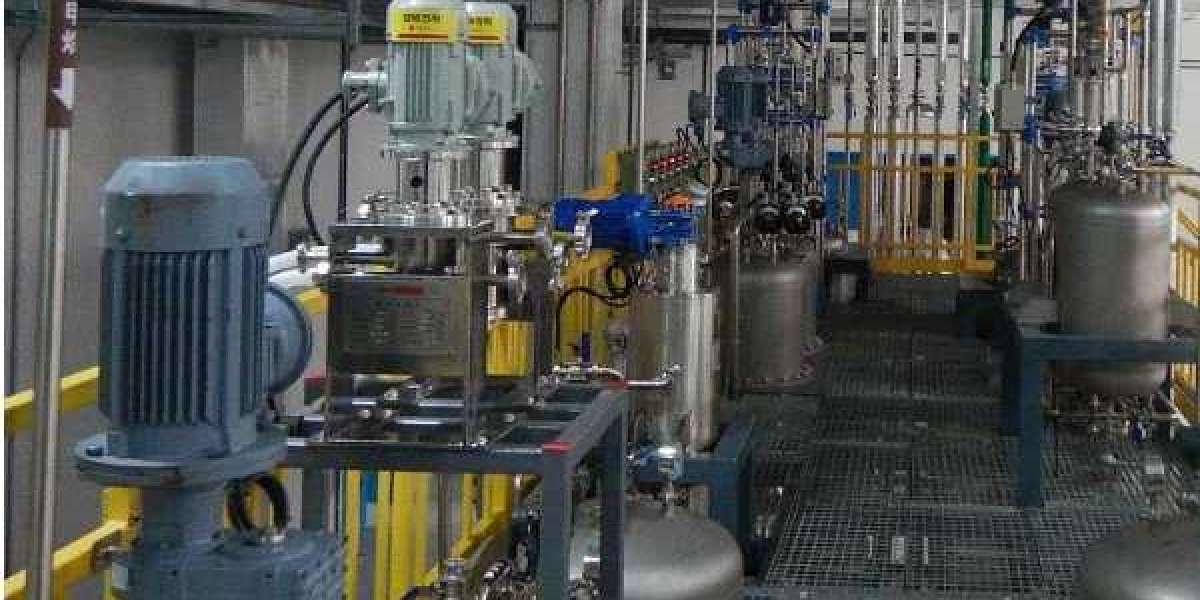The tube fluidized bed device represents a significant innovation in the field of chemical engineering and industrial processing. Designed to improve the efficiency and effectiveness of various processes, this technology offers several advantages over traditional methods. This article provides an in-depth exploration of the tube fluidized bed device, including its key benefits, diverse applications.
What is a Tube Fluidized Bed Device?
A tube fluidized bed device is a type of fluidized bed reactor where the bed material, typically particles or granules, is supported and fluidized within a vertical or horizontal tube. The primary function of this device is to facilitate efficient mixing, heat transfer, and chemical reactions through the fluidization of solid particles by a fluid, usually air or gas. The fluidized bed provides a uniform environment for the reactions or processes, enhancing performance and efficiency.
Key Components
Tube Reactor: The central component of the device, where the fluidized bed is maintained. It can be vertical or horizontal, depending on the design and application requirements.
Fluid Distributor: Located at the bottom of the tube, it ensures even distribution of the fluid across the bed material to achieve uniform fluidization.
Bed Material: Solid particles or granules that are fluidized by the incoming fluid. The choice of bed material depends on the specific application and desired properties.
Control System: Monitors and adjusts operating parameters such as fluid flow rate, temperature, and pressure to maintain optimal conditions for the process.

Advantages of Tube Fluidized Bed Devices
Enhanced Efficiency Improved Heat Transfer
Tube fluidized bed devices offer superior heat transfer capabilities compared to traditional reactors. The uniform fluidization of bed material ensures efficient contact between the solid particles and the fluid, enhancing the transfer of heat to or from the bed material. This improved heat transfer is crucial for processes that require precise temperature control.
Uniform Mixing
The fluidized bed provides excellent mixing of solid particles, ensuring that all particles are exposed to the fluid. This uniform mixing leads to consistent reaction rates and improved process efficiency. In applications such as catalytic reactions or combustion, uniform mixing is essential for achieving optimal performance.
Better Process Control
Precise Temperature Regulation
The design of tube fluidized bed devices allows for precise control of temperature. The ability to maintain a uniform temperature throughout the bed is beneficial for processes that require specific thermal conditions. Accurate temperature control enhances the consistency and quality of the final product.
Flexible Operation
Tube fluidized bed devices can be easily adjusted to accommodate different process conditions. Parameters such as fluid flow rate, bed height, and temperature can be modified to suit varying requirements. This flexibility makes the device suitable for a wide range of applications and processes.
Enhanced Safety and Reliability
Reduced Risk of Hot Spots
The uniform fluidization and mixing within the tube fluidized bed device help prevent the formation of hot spots, which can be a safety concern in other types of reactors. By maintaining consistent temperature and mixing, the risk of localized overheating and associated safety hazards is minimized.
Reliable Performance
The design of tube fluidized bed devices ensures stable and reliable performance. The uniform distribution of fluid and consistent mixing contribute to predictable and repeatable process outcomes, reducing the likelihood of unexpected issues or failures.
Environmental Benefits
Lower Emissions
In processes where emissions are a concern, tube fluidized bed devices can contribute to reduced emissions. The efficient mixing and heat transfer capabilities help achieve more complete combustion or reaction, resulting in lower levels of unreacted materials and pollutants.
Reduced Waste
The enhanced efficiency of tube fluidized bed devices can lead to reduced waste generation. Improved process control and uniform mixing result in better utilization of raw materials and fewer by-products, contributing to a more sustainable operation.
Applications of Tube Fluidized Bed Devices
Chemical and Petrochemical Industries
Catalytic Reactions
Tube fluidized bed devices are widely used in catalytic reactions, where they provide a uniform environment for the catalyst and reactants. The efficient mixing and heat transfer enhance the performance of catalytic processes, such as hydrocracking, reforming, and polymerization.
Gas-Phase Reactions
In gas-phase reactions, tube fluidized bed devices offer excellent contact between the gas and solid particles.
This contact improves reaction rates and yields, making the device suitable for processes such as gasification and catalytic oxidation.
Environmental Engineering
Waste Treatment
Tube fluidized bed devices are employed in waste treatment processes, including the treatment of hazardous materials and organic waste. The uniform fluidization and efficient mixing facilitate the degradation or neutralization of waste materials, contributing to effective waste management.
Air Pollution Control
In air pollution control applications, tube fluidized bed devices can be used for processes such as flue gas desulfurization. The efficient contact between gases and solid sorbents helps remove pollutants from exhaust gases, improving air quality.
Pharmaceutical and Food Industries
Powder Processing
The pharmaceutical and food industries use tube fluidized bed devices for powder processing applications, including drying, granulation, and coating. The uniform fluidization ensures consistent processing and high-quality end products.
Granulation
Tube fluidized bed devices are used for granulation in the pharmaceutical industry, where they provide controlled granule formation and size distribution. The precise control of operating parameters results in uniform granules with desired properties.
Research and Development
Process Optimization
In research and development, tube fluidized bed devices are valuable tools for optimizing processes and studying reaction mechanisms. Their flexibility and precise control capabilities allow researchers to experiment with different conditions and configurations, leading to new insights and improvements.
Scale-Up Studies
Tube fluidized bed devices are also used in scale-up studies to transition from laboratory-scale processes to larger industrial-scale operations. The ability to simulate industrial conditions and maintain consistent performance is essential for successful scale-up.
Conclusion
The tube fluidized bed device offers a range of advantages, including enhanced efficiency, improved process control, and environmental benefits. Its versatility and effectiveness make it a valuable tool in various industries, including chemical processing, environmental engineering, and pharmaceuticals.
As technology continues to advance, tube fluidized bed devices will see further innovations and improvements, leading to even greater performance and sustainability. Embracing these advancements will enable industries to achieve more efficient, cost-effective, and environmentally friendly operations, driving progress and innovation in the field.







